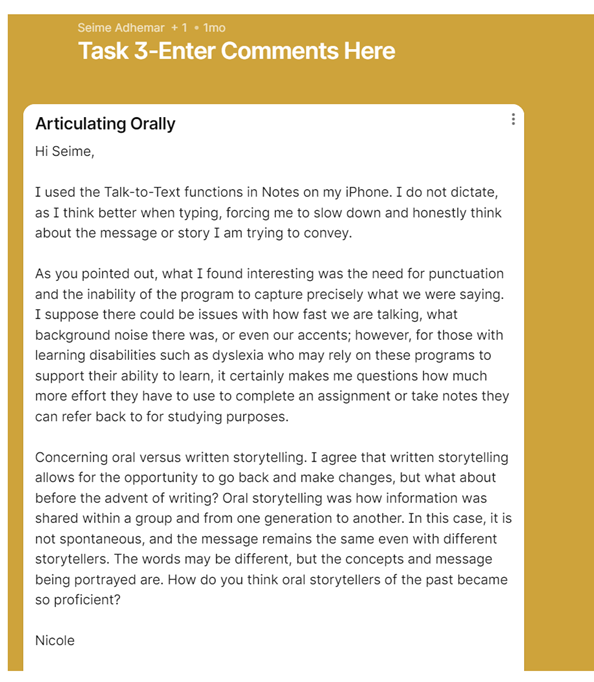My enunciation is fine when it comes to speech-to-text; as a storyteller, this is good to know!

As I noted in my post, accuracy is one of the biggest drawbacks of speech-to-text. Unlike me, voice recognition technology isn’t perfect, and regardless of how well you may enunciate, some of your words are misheard or misinterpreted.
Seime made a great point in his post, “Oral storytelling is spontaneous. The storyteller knows what he wants to say, but how the story flows is instinctive, and we adjust based on what we hear from our lips. Written storytelling is well thought out, and you can go back to make changes in sentence structure or completely reformulate phrases in such a way as to make the text as clear as possible.”
I think better seeing words on a page; it allows me to slow down, pause, and arrange my thoughts coherently, whereas when I am telling a story orally or debating, I struggle. My brain is moving a mile a minute, I have so many thoughts and ideas to share that I need to speak in a coherent and compelling manner. The concept of neurodivergence is not new, and many of the greatest inventors have been found to be neurodiverse. I wonder if, before the introduction of the text, neurodivergence was more common. Dr. Grandin Temple states, “Some guy with high-functioning Asperger’s developed the first stone spear; it wasn’t developed by the social ones yakking around the campfire” (Armstrong, 2010). The social ones probably created text while the neurodivergent members laboured to find food and shelter. This may provide an evolutionary explanation for why neurodiverse learners/thinkers are still in the gene pool (Armstrong, 2015) and why we need both oral and text communication capabilities.
References:
Armstrong, T. (2010). Neurodiversity: Discovering the extraordinary gifts of autism, ADHD, dyslexia, and other brain differences (1st Da Capo Press ed.). Da Capo Lifelong.
Armstrong, T. (2015). The myth of the normal brain: Embracing neurodiversity. AMA journal of ethics, 17(4), 348-352.
